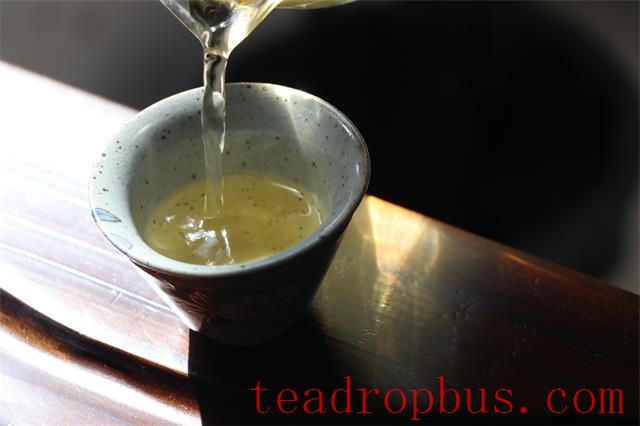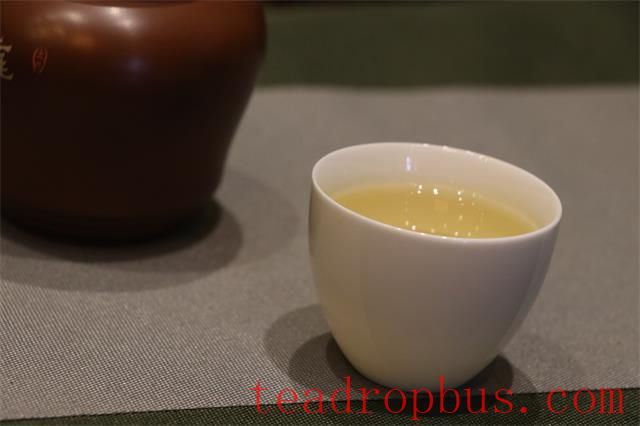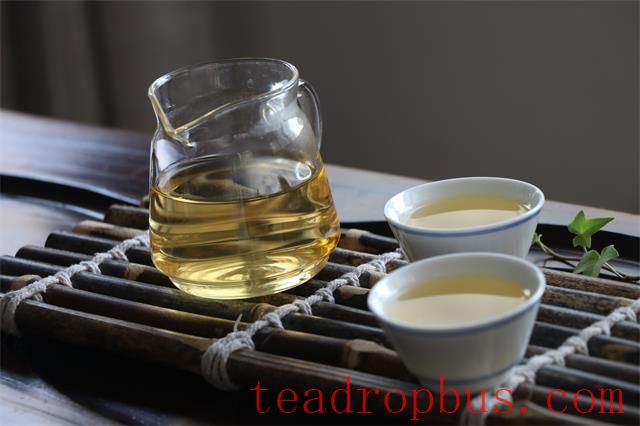When it comes to the benefits of Tea, almost every tea enthusiast can share a few thoughts, whether from anecdotes among friends, vigorous marketing by tea sellers, or health lectures by tea experts. However, many of these examples lack solid data and factual evidence.
Since the last century, the scientific community has conducted in-depth research into the medicinal properties and therapeutic mechanisms of tea, including polyphenols, theaflavins, and L-EGCG. Although research on Pu'er tea started later, it has produced significant results.
In this feature article, we will discuss various phytonutrients found in Pu'er tea, how they interact with the human body, and the tangible benefits they provide.

The Health Needs of Ancient and Modern People
For centuries, the Tibetan region has been home to sayings like “Tea is blood,” “Tea is flesh,” and “Tea is life.” At that time, herders believed Pu'er tea was a powerful health drink that could “detoxify meat and dairy.”
During the Qing Dynasty, the functional properties of Pu'er tea, such as its ability to “reduce grease, aid digestion, and sober up,” were widely recognized. It crossed numerous mountains to become the supreme tribute tea in the Forbidden City, marking the first peak in Pu'er tea's history.
The popularity of Pu'er tribute tea was due to the fact that the Manchu people originated from a nomadic culture and had a diet primarily consisting of meat, which required Pu'er tea for better digestion and overall health.
Thanks to its prosperity in the imperial city, Pu'er tea gained increasing attention. Works like Ruan Fu's “Pu'er Tea Records” and the pharmacologist Zhao Xuemin's “Supplement to the Compendium of Materia Medica” documented Pu'er tea's powerful functions.
Toward the end of the Qing Dynasty, Pu'er tea spread to the south and reached Southeast Asia, becoming firmly established in Hong Kong, where the belief in Pu'er tea's fat-burning and blood pressure-lowering effects persisted.
By the late 20th century, with rapid economic development and improved diets, the transition from malnutrition to overnutrition brought about diseases of affluence. During this period, Pu'er tea experienced a resurgence, partly due to its digestive and de-greasing properties.
However, while these historical accounts contain numerous assertions about the functions of Pu'er tea, they do not provide a basis for these conclusions. As such, they can only be considered “empirical science” and require “experimental science” for validation.
The key difference between experience and experimentation lies in the fact that experiments rely on data models, whereas experiences are based on individual perceptions. Rational experiments often build upon and verify empirical experiences, leading to similar conclusions.
Pu'er tea is no exception. With advances in biotechnology, the scientific community's understanding of its functional properties has deepened, discovering phytonutrients that combat aging and extend lifespan: primary and secondary metabolites.

Primary Metabolites and Phytonutrients
Nutrients contained in food are collectively known as nutrients, and the essential nutrients that sustain human life can currently be categorized into water, carbohydrates, lipids, proteins, minerals, trace elements, vitamins, and dietary fiber.[1]
Many plants, in addition to these basic nutrients, also contain “exclusive” nutrients, such as allicin in garlic, lycopene in tomatoes, cordycepin in Cordyceps militaris, tea polyphenols and tea saponins in tea leaves, and so on.[2]
These plant nutrients belong to primary metabolites, and although their effects vary, they all benefit human health. Some scholars consider them the most precious natural substances and even refer to them as “plant gold.”
Pu'er tea contains the widest variety and highest concentration of phytonutrients among teas. Some enthusiasts may think this claim is exaggerated or self-promotional, but we can verify it by examining tea polyphenols.
Tea polyphenols (TP, Tea Polyphenols) are one of the best-known nutrients in tea. Scientists classify tea polyphenols into different categories based on chemical structure, including catechins and anthocyanins, among others.[3]
Firstly, there is L-EGCG, the only anticancer substance mentioned in the “Tea Chemistry” textbook. From initial antioxidant studies to recent findings regarding the prevention of major diseases, L-EGCG holds great significance.[4]
Secondly, there is the catechin family, which some scholars believe is the best class of active ingredients in tea, with functions such as preventing vascular hardening, lowering cholesterol, reducing inflammation, fighting radiation, and preventing cancer.[5]
Lastly, there are anthocyanins, water-soluble natural pigments with antioxidant, anti-radiation, and UV protection properties. They can now be stably extracted and widely used in health supplements and cosmetics.[6]
In addition, the phytonutrients in tea include nearly thirty amino acids, several dozen alkaloids, as well as tea polysaccharides, γ-aminobutyric acid (GABA), theaflavins, and Theanine, among other beneficial substances, which we won't detail here.

Pu'er tea is made from large-leaf varieties (C.sinensis var. assamica), which have large leaves and thick spongy tissues. These leaves contain one-third more polyphenolic compounds than any other type of tea.[7]
When drinking other types of tea, the human body faces another challenge: lipophilic phytonutrients are insoluble in water, making it difficult to extract beneficial components through regular brewing for absorption.
Pu'er tea, however, does not have this concern. Thanks to its processing method, which centers around kneading and sun-drying, it transforms a large amount of lipophilic substances into water-soluble forms, making the tea more resistant to Steeping.
Therefore, thanks to the combination of large-leaf varieties and unique processing methods, Pu'er tea becomes the tea with the highest content of phytonutrients. These beneficial substances that cannot be synthesized by the human body can enhance our immunity and improve physical fitness.
In terms of specific types, newly processed raw Pu'er tea contains the highest number of phytonutrients, followed by ripe Pu'er tea, and least in aged Pu'er tea. However, in terms of secondary metabolites, an important substance, aged Pu'er tea has the highest content.
What are secondary metabolites? What benefits do they offer us? Why are their effects on the human body more pronounced than those of primary metabolites?
Due to space limitations, we will discuss the core of Pu'er tea's functionality—secondary metabolites—in the next feature article.
References:
[1] Chinese Nutrition Society. Reference Intakes of Dietary Nutrients for Chinese Residents [J]. Hotel Modernization, 2000, 23(3): 193-196.
[2] Shi Zaixiang, Du Jinxing. Clinical and Experimental Study of Allicin in the Treatment of Cerebral Infarction [J]. Chinese Journal of Medicinal Science, 1991, 006(001): 33-35.
[3] Yang Xianqiang, Cao Mingfu, Shen Shengrong, et al. Research on the Biological Activity of Tea Polyphenols [J]. Journal of Tea Science, 1993, 13(1): 9.
[4] Shen Shengrong. Study on the Superoxide Anion Radical Scavenging Characteristics of Tea Polyphenol Complexes and L-EGCG [J]. Journal of Zhejiang University (Agriculture and Life Sciences Edition), 1992, 000(004): 11.
[5] Xia Tao, Gao Liping. Advances in Research on the Biosynthesis Pathway and Regulation of Flavonoids and Tea Catechins [J]. Scientia Agricultura Sinica, 2009, 42(8): 2